Let's illuminate this part of the glyph text with stars.
The sacred spot (ha) at Heze (ζ
Virginis) was where the leaves of the
sugarcane came off (hakaha):
|
Manacle |
ziqq |
Phoenician zayin |
 |
Greek zeta |
Ζ
(ζ) |
|
... Zeta
(uppercase Ζ,
lowercase ζ;
Greek:
ζήτα
... is the sixth letter of the
Greek alphabet. In the system of
Greek numerals, it has a value
of 7. It was derived from the
Phoenician letter Zayin.
Letters that arose from zeta
include the Roman Z and Cyrillic
З ...
Zayin
(also spelled Zain or
Zayn or simply Zay)
is the seventh letter of many
Semitic abjads ... It represents
the sound [z].
The Phoenician letter appears to
be named after a sword or other
weapon. (In Biblical Hebrew, 'Zayin'
means sword, and the verb 'Lezayen'
means to arm. In modern Hebrew,
'zayin' means penis and 'lezayen'
is a vulgar term which generally
means to perform sexual
intercourse and is used in a
similar fashion to the English
word fuck, although the older
meaning survives in 'maavak
mezuyan' (armed struggle)
and 'beton mezuyan'
(armed, i.e., reinforced
concrete). The Proto-Sinaitic
glyph according to Brian Colless
may have been called ziqq,
based on a hieroglyph depicting
a 'manacle'.

 |
|
te
hokohuki |
te moko |
vero
hia |
tagata
honui |
e
ha mata |
|
Ha.
1. Four. 2.
To breathe.
Hakaha'a,
to
flay, to
skin.
Vanaga. 1.
Four. P
Mgv., Mq.,
Ta.: ha,
id. 2. To
yawn, to
gape. 3. To
heat. 4.
Hakaha,
to skin, to
flay;
unahi hakaha,
to scale
fish. Mgv.:
akaha,
to take to
pieces, to
take off the
bark or
skin, to
strip the
leaves off
sugarcane.
5. Mgv:
ha,
sacred,
prohibited.
Mq.: a,
a sacred
spot. Sa.:
sa,
id.
Churchill. |
 |
 |
 |
 |
 |
|
Cb8-4 |
Cb8-5 (172 +
4) |
Cb8-6 (177 =
6 * 29½) |
Cb8-7 (392 +
178 = 570) |
Cb8-8 (1½ *
314 + 100) |
|
CLOSE TO THE
FULL MOON: |
|
γ Hydrae
(201.0), ι
Centauri
(201.4) |
Al Simāk-12
(Lofty) /
Chitra-14
(Bright One)
/
Horn-1
(Crocodile)
/
Sa-Sha-Shirū-20
(Virgin's
Girdle) /
ANA-ROTO-3
(Middle
pillar)
MIZAR = ζ
Ursae
Majoris
(202.4),
SPICA
= α
Virginis,
ALCOR
= 80 Ursae
Majoris
(202.7)
SADALMELIK (α Aquarii)
*161.0 =
*202.4 -
*41.4 |
71 VIRGINIS
(203.6) |
no star
listed (204) |
HEZE = ζ
Virginis
(205.0),
Southern
Pinwheel
Galaxy = M83
Hydrae
(205.7) |
|
... Proclus
informs us
that the fox
star nibbles
continuously
at the thong
of the yoke
which holds
together
heaven and
earth;
German
folklore
adds that
when the fox
succeeds,
the world
will come to
its end.
This fox
star is no
other than
Alcor,
the small
star g near
zeta Ursae
Majoris (in
India
Arundati,
the common
wife of the
Seven
Rishis,
alpha-eta
Ursae
... |
|
... Mons
Maenalus,
at the feet
of Boötes,
was formed
by Hevelius,
and
published in
his
Firmamentum
Sobiescianum;
this title
coinciding
with those
of
neighboring
stellar
groups
bearing
Arcadian
names. It is
sometimes,
although
incorrectly,
given as
Mons
Menelaus,
- perhaps,
as Smyth
suggested,
after the
Alexandrian
astronomer
referred to
by Ptolemy
and
Plutarch.
The Germans
know it as
the Berg
Menalus;
and the
Italians as
Menalo.
Landseer has
a striking
representation
of the
Husbandsman,
as he styles
Boötes, with
sickle and
staff,
standing on
this
constellation
figure. A
possible
explanation
of its
origin
may be found
in what
Hewitt
writes in
his
Essays on
the Ruling
Races of
Prehistoric
Times:
The Sun-god
thence
climbed up
the
mother-mountain
of the
Kushika race
as the
constellation
Hercules,
who is
depicted in
the old
traditional
pictorial
astronomy as
climbing
painfully up
the hill to
reach the
constellation
of the
Tortoise,
now called
Lyra, and
thus attain
the polar
star Vega,
which was
the polar
star from
10000 to
8000 B.C.
May not this
modern
companion
constellation,
Mons
Maenalus, be
from a
recollection
of this
early Hindu
conception
of our
Hercules
transferred
to the
adjacent
Bootes?
 |
|
Oct 8 (240 +
41) |
9 |
10 |
11 (364 -
80) |
12 (285) |
|
'Sept
11 (354 -
100) |
12 |
13 (256 = 4
* 64) |
14 |
15 |
|
"Aug 28
(240) |
HORA ITI 29 |
30 (242 = 2
* 11 * 11) |
31 |
HORA NUI 1 |
|
PU PAKAKINA |
|
CLOSE TO THE
SUN: |
|
April 8 |
9 |
10 (100) |
11 |
12 |
|
no star
listed (18) |
ADHIL
(Garment's
Train) = ξ
Andromedae
(19.3),
θ
Ceti (19.7) |
KSORA (Knee)
= δ
Cassiopeiae
(20.1),
ω
Andromedae
(20.6),
γ
Phoenicis
(20.8) |
δ Phoenicis
(21.5) |
υ Andromedae
(22.9) |
|
'March 12 |
13 |
14 (73) |
15 |
16 |
|
"Febr 26 |
TE-HETUU-PU
27 |
28 (59) |
29 |
"March 1 |
 |
When the Sun had
reached to the End
of the River
(Eridanus) -
Achernar - viz. at
glyph number 181
counted from the
beginning of side b
on the tablet, there was a
reversal (a reorientation) we
can see:
| te hokohuki - ma te
maro |
te hokohuki ma te maro |
ka ke te manu ki te
maro |
|
Ke. 1. Other; different; different being; hare
ké, a different house; e-ké-ro-á... e-ké-ro-á... there are
some who... and others who...; me'e ké, something distinct,
different: te puaka ina oona kuhane; me'e ké te tagata, he hakari
oona, he kuhane, an animal has no soul; man is different, he has a
body, and a soul; matu'a ké, the other relatives. 2. Ké te
kairua, person who turns up for meals at other people's homes. 3.
Used in exclamations: hahau ké! what a cool breeze!; hana ké!
how hot! takeo ké! how cold! Vanaga. Other, distinct,
different, diverse, otherwise; koona ke, elsewhere; tagata ke,
some one else; mea ke, contrary, distinct, otherwise; hakake,
feint, stratagem, to feign; hagake, to act contrary. T Pau.:
ke, different. Mgv.: ke, another, other, else, different, of
partial comparative value. Mq.: ke, é, to be different,
changed, no longer the same. Ta.: e, different, strange, other.
Churchill.E, adv. and ppr. Haw., from, away, off, by,
through, means of; also, adverbially, something other, something
strange, new; adj. contrary, opposed, adverse, other, foreign. Sam.:
e, ppr. by, of; ese, other different, strange.Ta.,
e, ppr. by, through, from; adv. away, off; adj.
different, strange, distant; ee, strange. N. Zeal., ke,
strange, different.Malg., eze, of, by.Greek,
έκ, έξ, from out of, from,
by, of; έκει, in that place, opp. to ένθαδε,
in some other place than that of the speaker, thither; έκας,
afar off. Lat., e, ex, out of, from. Liddell and Scott
(Gr.-Engl. Dict., s. v.) say: 'The root of έτ-ερος is said to be
the same as Sanskr. ant-aras, Goth. auth-ar, Germ.
and-er, Lat. alt-er, aut, French aut-rui, our
eith-er, oth-er, itara = alius, also in
Sanskrit.' Whatever the root of ant-aras, auth-ar,
alter, it seems to me that έκας
shows nearer kindred to the Polynesian e,
ke, ee, ese, eze, than to forms so developed
as ant-ar, ant-ara, &c. Fornander. |
 |
 |
 |
|
Cb8-9 (180) |
Cb8-10 |
Cb8-11 |
|
CLOSE TO THE
FULL MOON: |
|
ε Centauri
(206.3), κ Oct. (206.4)
*165.0 = *206.4 - *41.4 |
no star
listed (207) |
τ
Bootis (208.2),
BENETNASH
(Leader of the Daughters of the Bier) =
η
Ursae Majoris
(208.5),
ν
Centauri (208.7),
μ
Centauri,
υ
Bootis (208.8) |
|
Oct
13 |
14 |
15
(288 = 12 * 24) |
|
'Sept
16 |
17 (260 = 364 - 104) |
18 (9 * 29 = 261) |
|
HORA NUI 2 |
"Sept 3 (246) |
4 (13 * 19 = 247) |
|
PU PAKAKINA
Paka. 1. Dry; to become dry
(of things); pakapaka, to dry out. Te paka is also the
name of the moss-covered areas, between the small lakes of volcano
Rano Kau, through which one can pass without getting one's feet wet.
2. To go, to depart; he-paka-mai, to come; he-oho, he-paka,
they go away. 3. To become calm (of the sea): ku-paka-á te tai.
Pakahera, skull, shell, cranium; pakahera puoko tagata,
human skull; pakahera pikea, shell of crab or crayfish. Gutu
pakapaka, scabbed lips. Hau paka, fibres of the hauhau
tree, which were first soaked in water, then dried to produce a strong
thread. Moa gao verapaka, chicken with bald neck. Ariki Paka,
certain collateral descendents of Hotu Matu'a, who exercised
religious functions. Vanaga. 1. Crust, scab, scurf; paka rerere,
cancer; pakapaka, crust, scabby. 2. Calm, still. 3. Intensive;
vera paka, scorching hot; marego paka, bald; nunu paka,
thin. 4. To arrive, to come. 5. To be eager. 6. To absorb. 7. Shin T.
Pakahera, calabash, shell, jug. Pakahia, to clot, curdle,
coagulate. Pakapaka, dry, arid, scorching hot, cooked too much, a
desert, to fade away, to roast, a cake, active; toto pakapaka,
coagulated blood; hakapakapaka, to dry, to broil, to toast.
Pakahera pikea, shell of crab or crayfish. Churchill. |
|
CLOSE TO THE
SUN: |
|
ACHERNAR
(End of the River) =
α
Eridani
(23.3),
χ
Andromedae (23.6),
τ
Andromedae (23.9) |
ALSEIPH
(Scimitar) =
φ
Persei
(24.5),
τ
Ceti (24.7) |
no star listed (25) |
|
April
13 → 413 = 14 * 29½ |
14
(104 = 4 * 26) |
15 |
|
'March 17 |
18 |
19 (78 = 3 * 26) |
|
"March
2 |
VAITU NUI 3 (63) |
4 (8 *
8) |
|
FEBR 8 |
9 (40 =
24 + 16) |
10 |
|
... On February 9 the Chorti Ah
K'in, 'diviners', begin the agricultural year. Both the 260-day
cycle and the solar year are used in setting dates for religious and
agricultural ceremonies, especially when those rituals fall at the same
time in both calendars. The ceremony begins when the diviners go to a
sacred spring where they choose five stones with the proper shape and
color. These stones will mark the five positions of the sacred cosmogram
created by the ritual. When the stones are brought back to the
ceremonial house, two diviners start the ritual by placing the stones on
a table in a careful pattern that reproduces the schematic of the
universe. At the same time, helpers under the table replace last year's
diagram with the new one. They believe that by placing the cosmic
diagram under the base of God at the center of the world they
demonstrate that God dominates the universe. The priests place the
stones in a very particular order. First the stone that corresponds to
the sun in the eastern, sunrise position of summer solstice is set down;
then the stone corresponding to the western, sunset position of the same
solstice. This is followed by stones representing the western, sunset
position of the winter solstice, then its eastern, sunrise position.
Together these four stones form a square. They sit at the four corners
of the square just as we saw in the Creation story from the Classic
period and in the Popol Vuh. Finally, the center stone is placed to form
the ancient five-point sign modern researchers called the quincunx ...
 |
|
DAY 23 |
24 |
25 (= 5 * 5) |
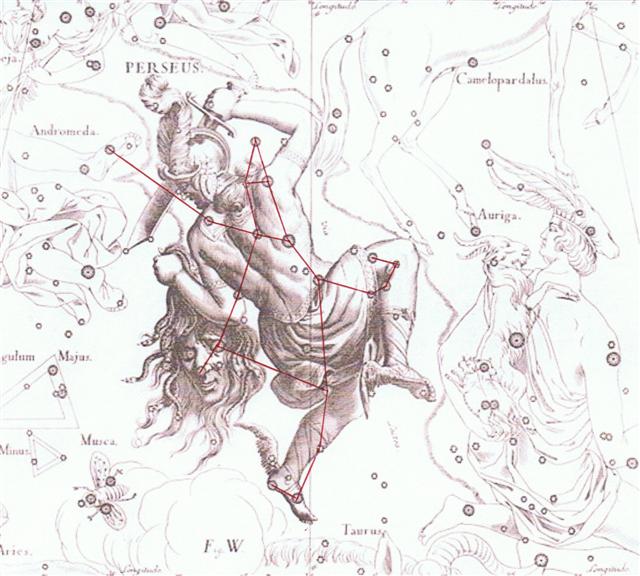
| Te ariki |
hokohuki |
te inoino |
te hokohuki |
te inoino |
te vai noho |
 |
 |
 |
 |
 |
 |
|
Cb8-12 |
Cb8-13 |
Cb8-14 |
Cb8-15 |
Cb8-16 |
Cb8-17 (188) |
|
CLOSE TO THE FULL MOON: |
|
Oct 16 |
17 (290) |
18 |
19 |
20 |
21 |
|
no star listed (209) |
MUPHRID
(Solitary Star) = η Bootis
(210.1), ζ Centauri (210.3) |
φ
Centauri (211.0), υ¹ Centauri (211.1), υ² Centauri (211.8), τ Virginis
(211.9) |
AGENA (At the Knee) =
β
Centauri
(212.1),
θ
Apodis (212.5),
THUBAN
(Dragon) =
α
Draconis
(212.8) |
14h (213.1)
π
Hydrae,
χ
Centauri (213.0),
MENKENT (Shoulder of the Centaur) =
θ
Centauri
(213.1) |
Neck-2 (Dragon)
ASELLUS TERTIUS (3rd Ass Colt) =
κ
Bootis,
κ Virginis,
14 Bootis
(214.8) |
|
... Thuban had been the star at the North Pole when
the great Egyptian pyramids where built.
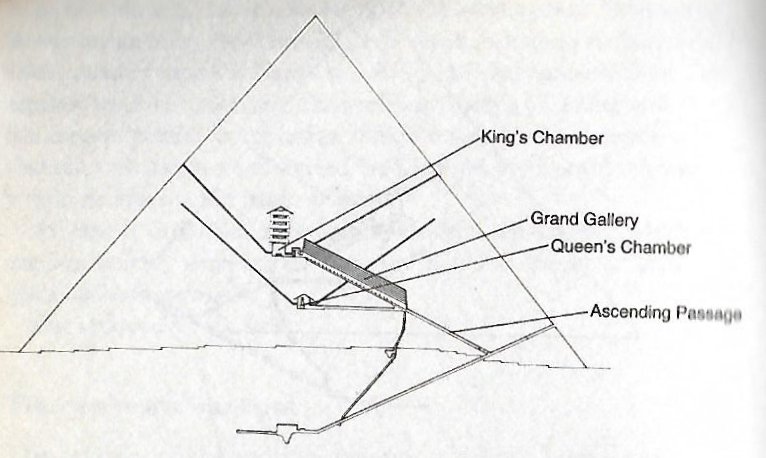
... The star could be seen, both by day and night,
from the bottom of the central passage of the Great Pyramid of Cheops (Knum
Khufu) at Ghizeh, in 30° of north latitude, as also from the similar
points in five other like structures; and the same fact is asserted by
Sir John Herschel as to the two pyramids at Abousseir ... |
|
°Oct 12 |
13 |
14 |
15 |
16 |
17 (290) |
|
... The Julian calendar day Thursday,
4 October 1582 was followed by the first day of the Gregorian calendar,
Friday, 15 October 1582 (the cycle of weekdays was not affected)
... |
|
'Sept 19 |
20 |
21 |
EQUINOX |
23 (*186) |
24 (☼183) |
|
"Sept 5 (248) |
HORA NUI 6 |
7 |
8 |
9 |
10 |
|
PU PAKAKINA |
|
AUG 13 |
14 |
15 |
16 |
17 |
18 (230) |
|
DAY 209 |
210 |
211 |
212 |
213 |
214 (= 230 - 16) |
|
CLOSE TO THE
SUN: |
|
ANA-NIA-10 (Pillar-to-fish by)
χ
Ceti (26.1), POLARIS
=
α
Ursae Minoris,
BATEN KAITOS (Belly of the Fish) =
ζ
Ceti
(26.6),
METALLAH (Triagle) =
α
Trianguli
(26.9) |
Al Sharatain-1 /
Ashvini-1 /
Bond-16 (Dog) /
Mahrū-sha-rishu-ku-1 (Front of the Head of Ku)
SEGIN =
ε
Cassiopeia,
MESARTHIM =
γ
Arietis,
ψ
Phoenicis (27.2), SHERATAN
(Pair of Signs) =
β
Arietis,
φ
Phoenicis (27.4)
*351.0 = *27.4 - *41.4 |
ι
Arietis (28.0), λ Arietis (28.2), υ Ceti (28.8) |
ALRISHA (The Knot) = α Piscium,
χ Phoenicis (29.2), ε Trianguli (29.4),
ALAMAK (Caracal) = γ Andromedae
(29.7)
*353.0 = *29.4 - *41.4 |
Arku-sha-rishu-ku-2 (Back of the Head of Ku)
2h (30.4)
κ
Arietis (30.3),
HAMAL
(Sheep)
= α
Arietis
(30.5)
ALKES (α
Crateris)
*354.0 = *30.4 - *41.4 |
DELTOTUM = β Trianguli
(31.2), ι
Trianguli (31.7), η Arietis (31.9)
|
|
... Strassmeier and Epping, in their
Astronomishes aus Babylon, say that there its stars formed the
third of the twenty-eight ecliptic constellations, - Arku-sha-rishu-ku,
literally the Back of the Head of Ku, - which had been established along
that great circle milleniums before our era; and Lenormant quotes, as an
individual title from cuneiform inscriptions, Dil-kar, the
Proclaimer of Dawn, that Jensen reads
As-kar, and others Dil-gan, the Messenger of Light. George
Smith inferred from the tablets that it might be the Star of the
Flocks; while other Euphratean names have been Lu-lim,
or Lu-nit, the Ram's Eye; and Si-mal or Si-mul, the
Horn star, which came down even to late astrology as the Ram's Horn.
It also was Anuv, and had its constellation's titles I-ku
and I-ku-u, - by abbreviation Ku, - the Prince, or the
Leading One, the Ram that led the heavenly flock, some of íts titles at
a different date being applied to Capella of Auriga. Brown associates it
with Aloros, the first of the ten mythical kings of Akkad anterior to
the Deluge, the duration of whose reigns proportionately coincided with
the distances apart of the ten chief ecliptic stars beginning with
Hamal, and he deduces from this kingly title the Assyrian Ailuv,
and hence the Hebrew Ayil; the other stars corresponding to the
other mythical kings being Alcyone, Aldebaran, Pollux, Regulus, Spica,
Antares, Algenib, Deneb Algedi, and Scheat ... |
|
April 16 (314 * 1½) |
17 (16 * 29½) |
18 (108) |
19 |
20 |
21 |
|
'March 21 (80) |
22 |
23 |
24 |
Julian equinox |
26 |
|
... When the Pope had decided to abandon day 84
(Julian equinox) in favour of day 80 (Gregorian equinox) it implied
counting from the December solstice in order to reach day 11 + 80 = 91 =
364 / 4 = 7 * 13 (ºMarch 21), instead of the previous 84 = 336 / 4 = 7 *
12 (ºMarch 25) as counted from the beginning of the year ... |
 |
A corresponding reorientation (reversal) in
the G text came between 14h and the Neck of
the Dragon, i.e. *214 - *207 = one right
ascension week later:
|
AUG 14 |
15 |
16
(*148) |
17 (229) |
18 |
 |
 |
 |
 |
 |
|
Ga6-6 |
Ga6-7 |
Ga6-8
(148) |
Ga6-9 |
Ga6-10 |
|
CLOSE TO THE
SUN: |
|
MUPHRID
(Solitary Star) = η Bootis
(210.1), ζ Centauri (210.3) |
φ
Centauri (211.0), υ¹ Centauri (211.1), υ² Centauri (211.8), τ Virginis
(211.9) |
AGENA (At the Knee) =
β
Centauri
(212.1),
θ
Apodis (212.5),
THUBAN
(Dragon) =
α
Draconis
(212.8) |
14h (213.1)
π
Hydrae,
χ
Centauri (213.0),
MENKENT (Shoulder of the Centaur) =
θ
Centauri
(213.1) |
Neck-2 (Dragon)
ASELLUS TERTIUS (3rd Ass Colt) =
κ
Bootis,
κ Virginis,
14 Bootis
(214.8) |
|
DAY 210 |
211 |
212 |
213 (= 229 - 16) |
214 |
Or perhaps we should
count *214 - *24 =
*190 (→ 247 / 13).
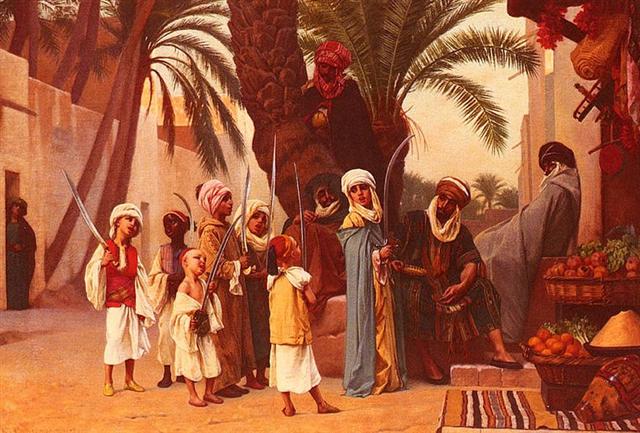
|
te
nuku |
te
henua ma
te nuku |
|
Nuku.
1.
Pau.:
nuka,
crowd,
throng.
Ta.:
nuú,
army,
fleet.
Mg.:
nuku,
a host,
army. 2.
Mgv.:
nuku,
land,
country,
place.
Sa.:
nu'u,
district,
territory,
island.
Churchill. |
 |
 |
 |
|
Cb8-18 |
Cb8-19
(190) |
Cb8-20 |
|
CLOSE TO THE
FULL MOON: |
|
Oct 22
(10 *
29½) |
23 |
24 |
|
Al
Ghafr-13
(The
Cover) /
Svāti-15
(Very
Good) /
TAHUA-TAATA-METUA-TE-TUPU-MAVAE-6
(a
pillar
to stand
by)
15
Bootis
(215.2),
ARCTURUS
= α
Bootis
(215.4),
ASELLUS
SECUNDUS
(2nd Ass
Colt) =
ι
Bootis
(215.5),
SYRMA
(Train
of the
Virgin's
Robe) =
ι
Virginis,
λ
Bootis
(215.6),
η
Apodis
(215.8)
*174.0 =
*215.4 -
*41.4 |
ι Lupi,
18
Bootis
(216.3),
KHAMBALIA
(Crooked-Clawed)
= λ
Virginis (216.4), υ Virginis (216.5), ψ Centauri (216.6),
ε Apodis
(216.8
*175.0 =
*216.4 -
*41.4 |
ASELLUS
PRIMUS
(1st Ass
Colt) =
θ
Bootis
(217.8) |
|
°Oct 18 |
19 (292
= 4 *
73) |
20 |
|
'Sept 25 |
26 |
27 (10 *
27) |
|
"Sept 11
(254) |
HORA NUI
12 |
13 (4 *
64) |
|
Venus |
Saturn |
Sun |
Moon |
Mars |
Mercury |
Jupiter |
|
3 |
4 |
5 |
6 |
7 |
8 |
9 |
|
10 |
11 |
12 |
13 |
14 |
15 |
16 |
|
17 |
18 |
19 |
20 |
21 |
22 |
23 |
|
24 |
25 |
26 |
27 |
28 |
29 |
30 |
|
31 |
32 |
33 |
34 |
35 |
36 |
37 |
|
38 |
39 |
40 |
41 |
42 |
43 |
44 |
|
etc |
|
|
CLOSE TO
THE
SUN: |
|
ξ¹ Ceti
(32.1) |
χ Persei
(33.2),
θ
Arietis
(33.3),
MIRA
= ο Ceti
(33.7) |
no star
listed
(34) |
|
...
Although
an old
constellation,
Cetus is
by no
means of
special
interest,
except
as
possessing
the
south
pole of
the
Milky
Way and
the
Wonderful
Star,
the
variable
Mira;
and from
the fact
that it
is a
condensation
point of
nebulae
directly
across
the
sphere
from
Virgo,
also
noted in
this
respect
...

...
Mira
also
known as
Omicron
Ceti
(ο Ceti,
ο
Cet), is
a red
giant
star
estimated
200-400
light
years
away in
the
constellation
Cetus.
Mira is
a binary
star,
consisting
of the
red
giant
Mira A
along
with
Mira B.
Mira A
is also
an
oscillating
variable
star and
was the
first
non-supernova
variable
star
discovered,
with the
possible
exception
of
Algol.
Apart
from the
unusual
Eta
Carinae,
Mira is
the
brightest
periodic
variable
in the
sky that
is not
visible
to the
naked
eye for
part of
its
cycle
...
In a way
Mira
therefore
can
illustrate
how life
(light)
departs,
yet
returns
again
after
the
completion
of a
cycle.
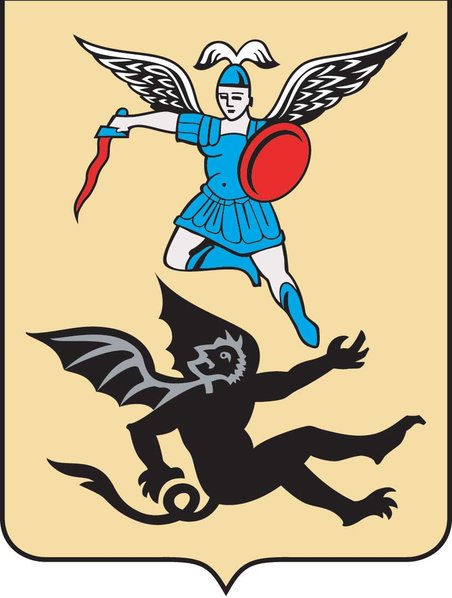
... In
1638
Johannes
Holwarda
determined
a period
of the
star's
reappearances,
eleven
months;
he is
often
credited
with the
discovery
of
Mira's
variability.
Johannes
Hevelius
was
observing
it at
the same
time and
named it
'Mira'
(meaning
'wonderful'
or
'astonishing,'
in
Latin)
in
1662's
Historiola
Mirae
Stellae,
for it
acted
like no
other
known
star.
Ismail
Bouillaud
then
estimated
its
period
at 333
days,
less
than one
day off
the
modern
value of
332
days,
and
perfectly
forgivable,
as Mira
is known
to vary
slightly
in
period,
and may
even be
slowly
changing
over
time
... |
| koia ia |
kua haga ia - kua huki |
koia ra - tona mea |
 |
 |
 |
|
Cb8-21 (392 + 192 = 584) |
Cb8-22 (193) |
Cb8-23 |
|
CIRCUIT OF VENUS |
|
Evening Star |
263 |
|
Black |
8 |
|
Morning Star |
263 |
|
Black |
50 |
|
Sum |
584 |
|
|
CLOSE TO THE
FULL MOON: |
|
Oct 25 |
26 |
27 (300) |
|
τ Lupi, δ Oct. (218.1), φ
Virginis (218.7)
FOMALHAUT (α Piscis Austrini)
|
σ
Lupi (219.1),
ρ
Bootis (219.5),
HARIS (Keeper) =
γ
Bootis
(219.7) |
σ
Bootis (220.2), η Centauri (220.4)
*179.0
= *220.4 - *41.4 |
 |
|
'Sept 28 |
29 |
30 (273
= 3 * 91) |
|
"Sept 14 |
15 |
16 (259
= 273 - 14 |
|
CLOSE
TO THE SUN: |
|
ξ Arietis (35.0), ρ Ceti
(35.4), ξ² Ceti (35.9) |
σ Ceti (36.9) |
ν Ceti (37.9) |
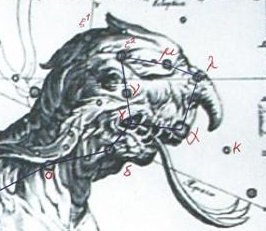 |
|
te
maitaki |
kua
hua
te
kahi |
te
ahine
poo
puo |
ki
te
huaga |
ki
te
huaga |
te
kahi |
|
Hua.
1.
Testicle.
2.
Figuratively:
son,
hua
tahi,
only
son;
fruits
of
the
earth;
to
grow
well
(of
fruits).
3.
To
cause
a
fight,
a
quarrel.
Hua-ai,
generation,
as
lineage
of
direct
descendents;
contemporaries. Huahua, coccyx of bird, 'parson's nose':
huahua
moa,
huahua
uha.
Huataru,
a
creeper
(Chenopodium
ambiguum).
Vanaga.
1.
The
same;
ki
hua,
again,
to
continue,
to
strain,
to
struggle,
to
move,
to
repeat,
over
and
above.
Mq.:
hua,
the
same,
to
return,
to
recommence.
2.
To
bloom,
to
sprout;
flower,
fruit
(huaa);
huaa
tae
oko,
huaa
vahio,
young
fruit;
hua
atahi,
only
son;
huahaga,
fruit;
mei
te
huahaga
o
tokoe
kopu,
the
fruit
of
thy
body;
tikea
huahaga,
deceptive
appearance.
P
Pau.:
ua,
to
be
born;
huahaga,
lineage.
Mgv.:
hua,
to
produce
(said
of
trees,
grain,
etc.),
blooming
time
of
flowers,
abundance
of
fruit.
Mq.:
hua,
to
produce,
to
bear
fruit.
Ta.:
ua,
to
sprout.
Huahua.
1.
Tailless
fowl.
2.
Vein,
tendon,
line.
3.
Mgv.:
huahua,
pimples
covering
the
face.
Ta.:
huahua,
id.
Mq.:
hua,
tubercules.
Sa.:
fuafua,
abscess
on
hand
or
feet.
Ma.:
huahua,
small
pimples.
Pau.:
Hua-gakau,
rupture.
Ta.:
áau,
entrails.
Sa.:
ga'au,
id.
Ma.:
ngakau,
id.
Churchill.
1.
Fruit.
2.
Egg.
3.
Tā
hua
=
'genealogical
writing'
or
'same
writing'.
Fischer.
Kahi.
Tuna;
two
sorts:
kahi
aveave,
kahi
matamata.
Vanaga.
Mgv.:
kahi,
to
run,
to
flow.
Mq.:
kahi,
id.
Churchill.
Rangitokona,
prop
up
the
heaven!
//
Rangitokona,
prop
up
the
morning!
//
The
pillar
stands
in
the
empty
space.
The
thought
[memea]
stands
in
the
earth-world
- //
Thought
stands
also
in
the
sky.
The
kahi
stands
in
the
earth-world
- //
Kahi
stands
also
in
the
sky.
The
pillar
stands,
the
pillar
- //
It
ever
stands,
the
pillar
of
the
sky.
(Morriori
creation
myth
according
to
Legends
of
the
South
Seas.) |
 |
 |
 |
 |
 |
 |
|
Cb8-24 |
Cb8-25 |
Cb8-26 |
Cb8-27 |
Cb8-28
(199) |
Cb8-29
(584
+ 8) |
|
CLOSE TO THE
FULL MOON: |
|
Oct
28 →
Cb8-28 |
29 |
30 |
31 |
Nov
1
(305) |
2 |
|
ρ
Lupi
(221.0),
TOLIMAN
(Shoot
of
the
Grapevine)
=
α
Centauri
(221.2),
π
Bootis
(221.8),
ζ
Bootis
(221.9) |
31
Bootis
(222.0),
YANG
MUN
(South
Gate)
=
α
Lupi
(222.1),
RIJL
AL
AWWA
(Foot
of
the
Barker)
=
μ
Virginis
(222.5),
ο
Bootis
(222.9) |
IZAR
(Girdle)
=
ε
Bootis
(223.0),
109
Virginis,
α
Apodis
(No
Feet)
(223.3),
μ
Librae
(223.8) |
Al
Zubānā-14a
(Claws)
/
Visakha-16
(Forked)
/
Root-3
(Badger)
ZUBEN
ELGENUBI
(Southern
Claw)
=
α
Librae
(224.2),
ξ
Bootis,
ο
Lupi
(224.5) |
KOCHAB
(Kakkab,
the
Star)
= β
Ursae
Min.
(225.0),
ξ
Librae
(225.7) |
KE
KWAN
(Cavalry
Officer)
=
β
Lupi
(226.3),
KE
KWAN
=
κ
Centauri
(226.4),
ZUBEN
ELAKRIBI
(Claw
of
the
Scorpion)
=
δ
Librae
(226.8),
π¹
Oct.
(226.9)
*185.0
=
*226.4
-
41.4 |
|
'Oct
1 |
2 |
3 |
4
(277) |
5 |
6 |
|
"Sept
17
(364
-
104) |
18
(9 *
29 =
261) |
19 |
20 |
21 |
Equinox |
 |
|
CLOSE TO
THE
SUN: |
|
ν
Arietis
(38.5),
δ, ε
Ceti
(38.8) |
μ
Arietis
(39.4),
HEAD
OF
THE
FLY
= 35
Arietis
(39.6),
KAFFALJIDHMA
(Part
of a
Hand)
=
γ
Ceti,
θ
Persei
(39.8) |
π
Ceti,
ο
Arietis
(40.0),
ANGETENAR
(Bend
in
the
River)
=
τ¹
Eridani,
μ
Ceti
(40.2),
RIGHT
WING
= 39
Arietis
(40.9) |
Bharani-2
(Yoni)
/
Stomach-17
(Pheasant)
π
Arietis
(41.2),
MIRAM
(Next
to
the
Pleiades)
=
η
Persei
(41.3),
BHARANI
= 41
Arietis
(41.4),
τ²
Eridani,
σ
Arietis
(41.7) |
TA
LING
(Great
Mound)
= τ
Persei
(42.4)
*1.0
=
*42.4
-
*41.4 |
ρ
Arietis
(43.0),
GORGONEA
SECUNDA
=
π
Persei
(43.5),
ACAMAR
(End
of
the
River)
=
θ
Eridani
(43.6),
ε
Arietis
(43.7),
λ
Ceti
(43.9)
DENEBOLA
(β
Leonis) |
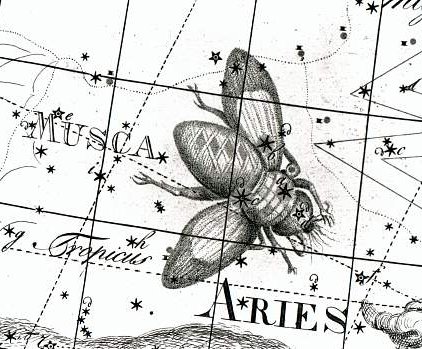 |
|
Vai
o
ero
hia |
kua
tere |
ki
te
marama |
kua
oho |
 |
 |
 |
 |
|
Cb9-1
(593
→ 59
* 3
=
177) |
Cb9-2 |
Cb9-3 |
Cb9-4
(204) |
|
CLOSE TO THE
FULL MOON: |
|
Nov
3 |
4 |
5 |
6
(310) |
|
ω
Bootis
(227.2),
NEKKAR
(Herdsman)
= β
Bootis
(227.3),
σ
Librae
(227.5),
π²
Oct.
(227.7),
NADLAT
(Mean
Little
Ones)
= ψ
Bootis
(227.8),
π
Lupi
(227.9) |
15h (228.3)
ZUBEN
HAKRABIM
= ν
Librae
(228.3),
λ
Lupi
(228.9) |
ω
Oct.
(229.3),
ι
Librae
(229.6),
κ
Lupi
(229.7),
ζ
Lupi
(229.8) |
Al
Zubānā-14b
(Claws)
χ
Bootis
(230.3),
PRINCEPS
=
δ
Bootis
(230.6),
ZUBEN
ELSCHEMALI
(Northern
Claw)
=
β
Librae
(230.8) |
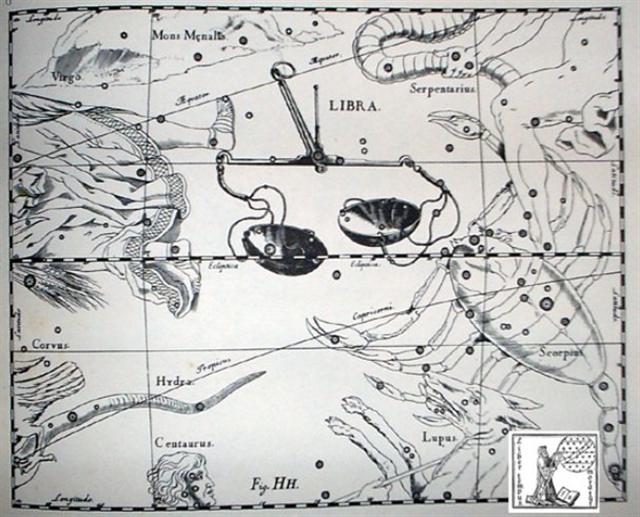 |
|
CLOSE TO
THE
SUN: |
|
May
4
(124) |
5 (5
* 5
* 5) |
6 |
7 |
|
MENKAR
(The
Nose)
= α
Ceti
(44.7) |
3h
(45.7)
GORGONEA
TERTIA
=
ρ
Persei
(45.1),
ALGOL
(The
Demon)
= β
Persei
(45.9) |
ι
Persei
(46.1),
MISAM
(Next
to
the
Pleiades)
=
κ
Persei
(46.2),
GORGONEA
QUARTA
=
ω
Persei
(46.7),
BOTEIN
(Pair
of
Bellies)
=
δ
Arietis
(46.9) |
ζ
Arietis
(47.7) |
|
°April
30
(120) |
°May
1
(*41) |
2 |
3 |
|
'April
7 |
8 |
9 |
10
(100) |
|
"March
24
(83) |
Julian
equinox |
26 |
27 |
|
MARCH
1 |
2 |
3 |
4
(63
= 47
+
16) |
|
DAY
44 |
45 |
46 |
47 |

|



























